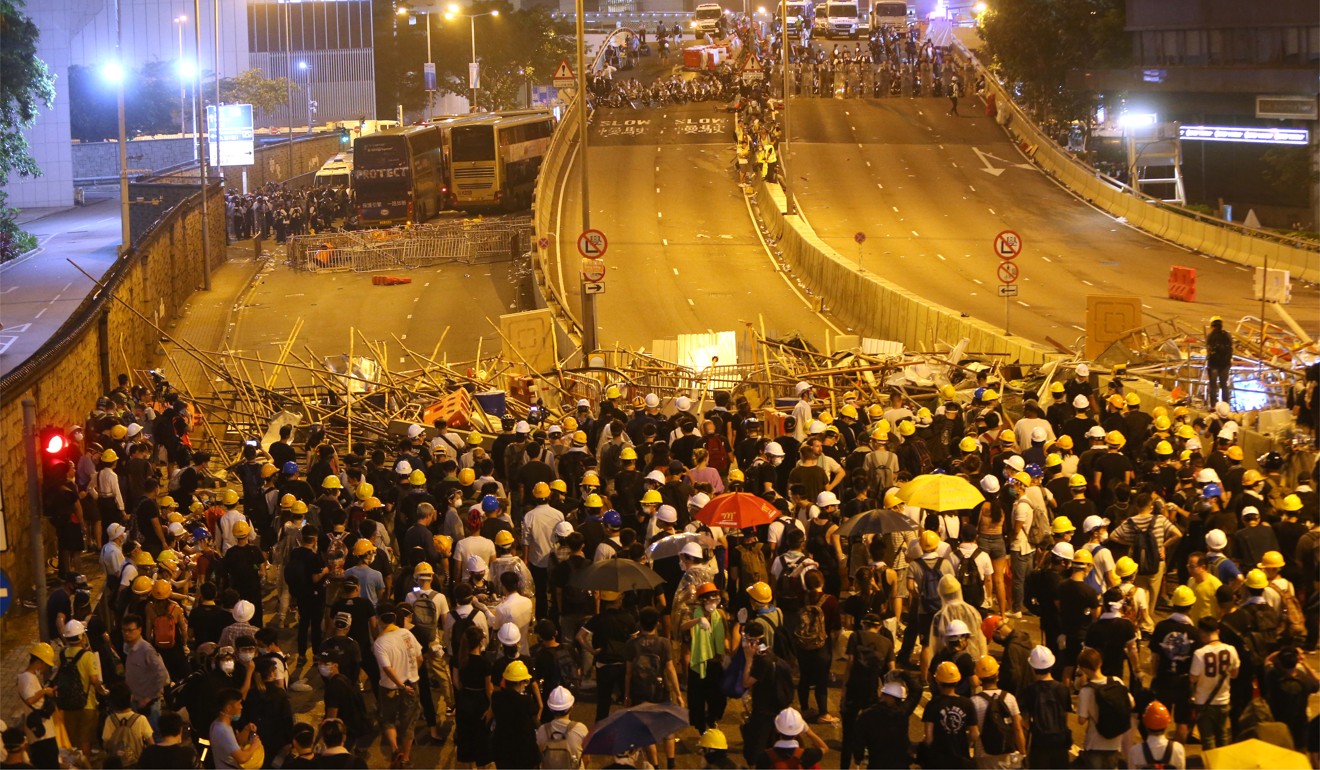
Analysis | Can Hong Kong’s extradition protesters succeed without a leader?
- Youth-led, leaderless movements project a united front and are less prone to violence
- But without strategic planning and coordination, they risk losing momentum
The demonstrations also displayed a significant degree of self-organisation, with coordinating groups such as the Civil Human Rights Front playing a marginal role.
While protests of such intensity and characteristics may be new to Hong Kong, they are part of a growing global phenomenon of predominately youthful, largely non-violent public resistance. So what can similar movements around the world teach us about the likely next steps for the anti-extradition forces?

LESSONS FROM ABROAD
A movement’s size is a strong but imperfect indication of its likely outcome. Larger movements tend to succeed more frequently than the small. Widespread, diverse participation means more leverage over opponents and a greater ability to disrupt organisations and institutions.
‘One country, two systems’ is good for business – and for Beijing
Leading scholars have identified three characteristics beyond sheer numbers that tend to help primarily non-violent movements succeed in bringing about change: unity, strategic planning, and non-violent discipline.
Unity is important because it communicates the fact that the movement’s goals are widely shared, and makes it more difficult for decision-makers to dismiss participants as just a few troublemakers. Strategic planning allows for the maximisation of impact. And avoiding violence undermines the justification for government repression and encourages moderates to join the cause.
So how do youth-led leaderless movements like Hong Kong’s perform when measured by these three yardsticks?
LEADERLESS PROTESTS
Lacking leaders and complex organisational structures may be a good thing for maintaining unity. A single leader like Mahatma Gandhi or Martin Luther King Jnr can be an inspiring figure. But leaders often fall short of these extraordinary examples, dividing movements over disagreements on policy and tactics. Participants may then spend more time fighting each other rather than opponents.
Blame naive Lam, not Beijing, for extradition law mess
The unifying benefits of leaderlessness have been prominent in the anti-extradition demonstrations. Protesters have expressed a greater acceptance of conflicting views and more willingness to focus on a single agenda.

When it comes to non-violent discipline, movements led from the ground up might seem more inclined to violence, but recent research indicates they may actually be more peaceful than hierarchical groups. This is in part because leaders may encourage violence for their own narrow ends, whereas most ordinary people will avoid it if they can. Leaderless movements may also encourage greater feelings of ownership among participants that encourage a peaceful approach.
Incidents of violence so far may be more of an exception and not indicative of an inevitable move away from peaceful means among leaderless, youth-led movements.
PLAN FOR SUCCESS
Where leaderless protests tend to struggle is in strategic planning. It is easy to unify a leaderless group around a single, simple goal. It is harder to coordinate a series of targeted tactics to achieve that goal, or to accept compromises along the way. And yet such targeting and compromise are often crucial to success.

What does all this mean for the next steps in the anti-extradition protests? Their size and unity make them difficult to ignore. The growing economic consequences are likely to put significant pressure on the government to resolve the crisis as quickly as possible.
However, the movement is likely to struggle in the strategic back and forth of reaching an acceptable conclusion. How its nascent leaders respond to that challenge will play a crucial role in determining the final outcome. ■
Jonathan Pinckney is a research fellow at the Norwegian University of Science and Technology and the author of When Civil Resistance Succeeds: Building Democracy after Popular Non-violent Uprisings

